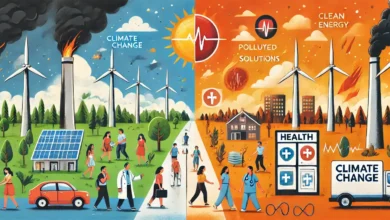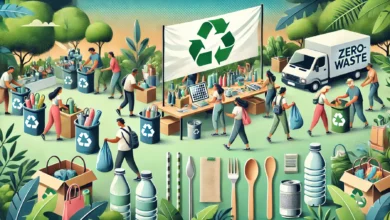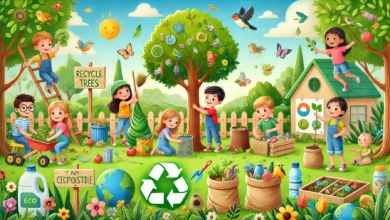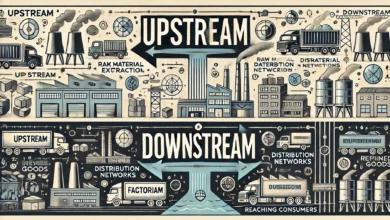The Hidden Impact of Plastic Waste on Our Planet
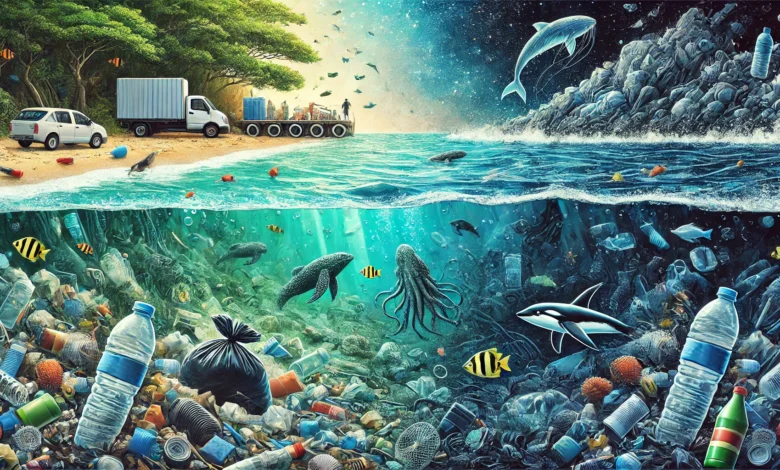
Plastic waste is one of the biggest environmental problems that we face today. It’s rather easy to ignore — one water bottle, one plastic bag — until the sheer prevalence of plastic becomes apparent as it mounts to billions! The only certainties are that both humans and wildlife are affected at all levels, and that will not change.
Contents
Plastic Pollution in Oceans
Plastic waste is most easily seen in oceans. The UN Environment Report of 2025 states that 11 million metric tons of plastic waste enters oceans and ends up in landfills every year.
- Plastic bags are mistaken for jellyfish by sea turtles who ingest them.
- Seabirds, whales, and fish all unknowingly consume microplastics.
- Dead zones have formed in oceans because marine life is ensnared in abandoned fishing nets.
Plastic does not simply go away — it disintegrates into progressively smaller pieces called microplastics — up the food chain and on to our dinner plates.
If you would like to dive deeper into oceanic and broader environmental changes, check out our article on Climate Change Effects on the Environment.
Effect on Wildlife and Ecosystems
Plastic waste affects life on the land, too. In so many places, animals become:
- Entangled in the discarded ring of six-pack beers or netting.
- Inhabiting landfills and garbage dumps; thereby exposed to hazardous chemicals leaching from plastics.
- The plastic litter that’s perpetrated onto landscapes alters or covers natural environments, destroying habitat.
Even remote locations such as the Arctic and uninhabited islands are not immune to plastic pollution, indicating how widespread plastic pollution has become.
Microplastics in Our Food and Water
Microplastics are now found in drinking water, in table salt, and even in the air we breathe. Microplastic is detectable in:
- Seafood and fish.
- Honey and beer.
- Vegetables grown from contaminated irrigated water.
By 2025, research suggests that the average person will ingest the equivalent of about 5 grams of plastic every week — the weight of a credit card.
Although scientists are still gathering evidence on the health impacts, the preliminary findings may indicate an impact on human health through endocrine disruption, inflammation, and other health-related issues.
Contributing Factor to Climate Change
Plastic production and disposal contributes to climate change as well. Plastics are made from petroleum-based products; therefore, the production of plastics emits greenhouse gases. In addition to this:
- Burning plastic waste emits carbon dioxide and other highly toxic gases.
- Landfill/Decomposition of plastic waste will release methane, another powerful greenhouse gas.
Plastic waste is not merely a pollution problem, it is also an energy and climate problem. If you want to implement some practical strategies at home, you can also explore 10 Easy Steps to Start a Zero-Waste Lifestyle.
Hidden Economic Costs
There are huge hidden economic costs associated with plastic pollution:
- Tourism-based economies suffer, visitors do not want to come back when they’re visiting a beach littered with plastic.
- Fisheries lose money when fish populations dwindle due to entanglement or ingestion.
- Communities are spending millions of dollars a year to clean plastic waste from beaches.
The 2025 Ocean Report found that coastal cleanups and waste management are costing the global economy over $13 billion a year.
Solutions to Plastic Pollution
Tackling plastic waste is a systems issue and an individual issue:
- Reduce single one-time use plastics: bring reusable bags, bottles, containers, etc.
- Support policies: that ban or tax single-use disposable plastics.
- Consider alternatives: choose glass, bamboo, or metal when possible.
- Reduce, reuse, and recycle appropriately: educate yourself on your local recycling rules to not contaminate your recyclables.
Education and innovation are essential too. The research and development of biodegradable plastics and increase of extended producer responsibility programs are two examples of what means for a more viable and sustainable future.
Changing Habits For a Healthier Planet
It can feel a bit daunting, but every small act by an individual adds up. Whether it’s saying no to a plastic straw, bringing a reusable shopping bag to the store, supporting companies that are sustainably conscious, etc., and they can positively influence a broad cultural shift.
We cannot fix the plastics problem overnight, but we can work continuously towards a cleaner, healthier planet — one conscious choice at a time.
Frequently Asked Questions (FAQ)
How much plastic waste ends up in the oceans each year?
According to the UN’s 2025 report, approximately 11 million metric tons of plastic waste enter the ocean each year.
What are microplastics?
Microplastics are pieces of plastic less than 5mm and are formed when larger plastics break down into smaller pieces, and they exist in food, water and the air.
How does plastic impact human health?
Ingesting plastic may lead to endocrine disruption, inflammation, and other health impacts, but research is still ongoing.
Can the production of plastics affect climate change?
Yes, the production and disposal of plastics produce greenhouse gas emissions that contribute to climate change.
What can individuals do to support reducing plastic waste?
There are simple acts that can create an impact over time, such as carrying a reusable bag to the store, refusing single use plastics, and recycling properly.
